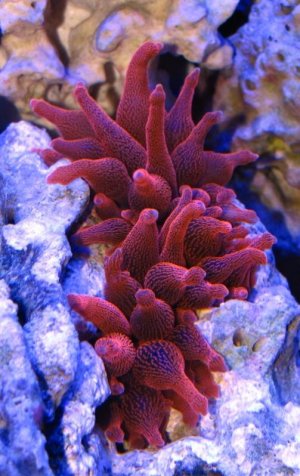blanden.adam
Team RC
Hello again guys,
So, my 29 gallon reef hit the 6 month mark last week, and I'm finally ready to try an anemone for my A. ocellaris pair (ok, well it's really for me, but I want them to like it too ) Lucky for me, Scott48 has a few that split off his parent nem (man I love tank raised livestock), and I have family traveling too and from Rochester to pick up a baby one (so it won't outgrow the tank before the upgrade to 75 gallon in 5-6 months or so).
) Lucky for me, Scott48 has a few that split off his parent nem (man I love tank raised livestock), and I have family traveling too and from Rochester to pick up a baby one (so it won't outgrow the tank before the upgrade to 75 gallon in 5-6 months or so).
Here is my issue though. I have about 9 corals waiting to come out of quarantine form the frag swap 2 weeks ago, but I don't want them to be sitting on the sandbed photoacclimating just to have my new RBTA decide the sandbed is in his way and it's time for everything else to get stung.
About how long does it usually take a BTA to find it's spot and stick there? How will I know it's picked it's spot and it's safe to deprotect the powerheads/bring in the new corals. Thanks so much guys and I look forward to everyone weighing in!
So, my 29 gallon reef hit the 6 month mark last week, and I'm finally ready to try an anemone for my A. ocellaris pair (ok, well it's really for me, but I want them to like it too
Here is my issue though. I have about 9 corals waiting to come out of quarantine form the frag swap 2 weeks ago, but I don't want them to be sitting on the sandbed photoacclimating just to have my new RBTA decide the sandbed is in his way and it's time for everything else to get stung.
About how long does it usually take a BTA to find it's spot and stick there? How will I know it's picked it's spot and it's safe to deprotect the powerheads/bring in the new corals. Thanks so much guys and I look forward to everyone weighing in!




